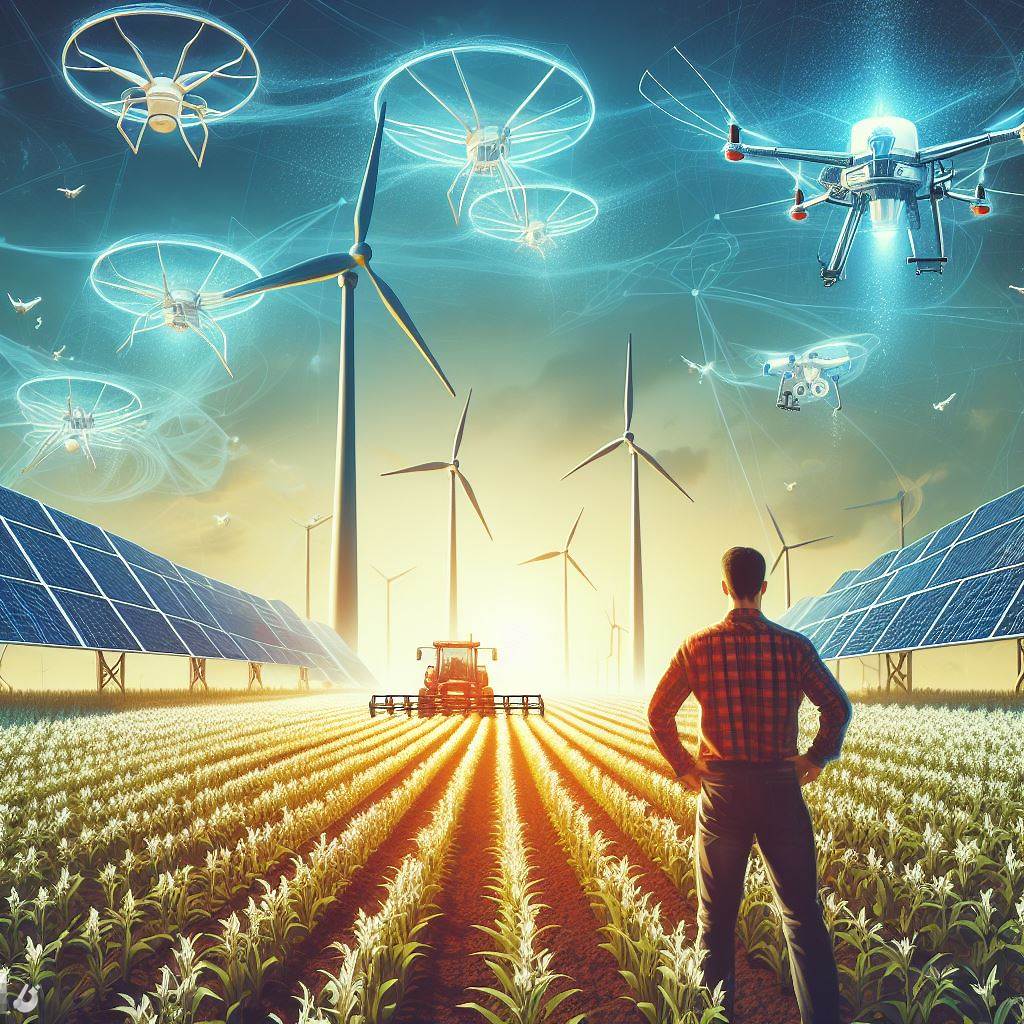Introduction to Climate Stability
Climate stability is crucial for agricultural success.
It directly affects crop yields and farming viability.
Unstable climate conditions lead to unpredictable weather patterns.
This unpredictability poses risks for farmland investments.
Understanding Climate Risks
Farmers face many challenges due to climate change.
Extreme weather events increase in frequency and intensity.
This includes droughts, floods, and unpredictable frosts.
Such conditions can devastate crop production.
Importance of Predictable Weather Patterns
Consistent weather patterns enable better planning for farmers.
Farmers can choose appropriate crops and planting times.
They can optimize water usage for irrigation.
Moreover, predictability helps in managing pest and disease outbreaks.
Investment Considerations for Farmland
Investors need to assess climate stability for farmland ventures.
Long-term climate forecasts inform risk assessments.
Investments should focus on regions with stable conditions.
Transform Your Agribusiness
Unlock your farm's potential with expert advice tailored to your needs. Get actionable steps that drive real results.
Get StartedAdditionally, sustainable practices can mitigate climate impacts.
Strategies for Enhancing Climate Resilience
Farmers can adopt various strategies to enhance resilience.
Diversity in crops improves resistance to climate volatility.
Additionally, incorporating agroforestry can stabilize ecosystems.
Implementing water conservation techniques is critical.
Furthermore, using cover crops helps protect soil health.
Climate Stability as a Fundamental Factor for Farmland Investments
Climate stability is vital for farmland investments.
Adequate analysis of climate factors ensures informed decisions.
Investors must prioritize sustainable practices for long-term success.
Understanding Climate Patterns and Trends Impacting Agriculture
Overview of Climate Change
Climate change significantly alters agricultural landscapes.
It leads to unpredictable weather patterns and extreme events.
Farmers must adapt to these changes for long-term sustainability.
Key Climate Variables
Temperature and precipitation are critical factors in agriculture.
Rising temperatures can increase crop stress and reduce yields.
Meanwhile, changes in rainfall patterns can lead to droughts or floods.
Impact of Seasonal Variability
Seasonal changes affect planting and harvesting schedules.
Inconsistent seasons can disrupt the entire agricultural cycle.
Farmers may need to implement new strategies to cope with variability.
Regional Climate Trends
Different regions experience climate change in distinct ways.
Some areas may see increased rainfall, while others face droughts.
Understanding regional trends helps farmers make informed decisions.
Long-Term Forecasting Models
Forecasting models help predict future climate scenarios.
These tools analyze historical data to project future trends.
Accurate forecasts enable better planning and risk management.
Showcase Your Farming Business
Publish your professional farming services profile on our blog for a one-time fee of $200 and reach a dedicated audience of farmers and agribusiness owners.
Publish Your ProfileEffective Adaptation Strategies
Farmers can adopt various strategies to mitigate climate impacts.
Crop diversification increases resilience against climate variability.
Implementing technology can also enhance efficiency and sustainability.
- Utilizing precision agriculture techniques
- Investing in drought-resistant crop varieties
- Enhanced water management practices
The Role of Policy and Education
Policy decisions shape agricultural responses to climate change.
Support from governments can facilitate necessary adaptations.
Education and training programs empower farmers with knowledge.
Assessing Current Climate Risks for Farmland Regions
Overview of Climate Risks
Climate risks significantly impact farmland regions worldwide.
These risks include extreme weather events and shifting climate patterns.
Farmers face challenges such as droughts, floods, and unpredictable temperatures.
Each of these factors threatens crop yields and soil health.
Importance of Risk Assessment
Risk assessment is essential for informed farmland investments.
Understanding current climate risks can guide sustainable practices.
Moreover, it helps investors make strategic decisions in response to potential threats.
Types of Climate Risks
- Extreme Weather: Hurricanes and tornadoes can destroy crops.
- Drought: Extended dry periods lead to water scarcity.
- Flooding: Heavy rainfall can cause soil erosion and crop loss.
- Pests and Diseases: Warmer temperatures may increase pest populations.
Regional Variability in Climate Risks
Climate risks vary by region due to geographic and climatic differences.
For example, the Midwest U.S. faces different threats than coastal areas.
Investors should consider local climate data when evaluating farmland.
Additionally, historical climate patterns provide context for future risks.
Tools for Assessing Climate Risks
Various tools exist to assess climate risks for farmland.
For instance, farmers can utilize climate modeling software.
Remote sensing technology also helps track changing agricultural conditions.
Furthermore, local agricultural extensions offer valuable resources.
Implications of Long-Term Climate Trends for Agriculture
Long-term climate trends often signal significant shifts in agriculture.
Investors must be proactive in adapting to these changes.
Failure to assess climate risks can lead to financial losses.
A thorough risk assessment is crucial for successful investment.
Explore Further: Enhancing Wildlife Habitats Through Agroforestry in Land Development
Long-term Projections of Climate Change Impacts on Agriculture
Understanding Climate Models
Climate models simulate future atmospheric conditions.
These models consider various greenhouse gas emissions scenarios.
They provide insights into temperature, precipitation, and extreme weather events.
Investors must understand model outcomes for agriculture viability.
Projected Temperature Increases
Average global temperatures are expected to rise in the coming decades.
This increase may alter growing seasons across regions.
Farmers may need to adapt crop selection due to temperature fluctuations.
Moreover, certain crops may become less viable over time.
Changes in Precipitation Patterns
Climate change will likely shift rainfall patterns across the globe.
Some areas may experience increased rainfall, while others face droughts.
This variability can affect soil moisture levels significantly.
Crops reliant on consistent water supplies may struggle to thrive.
Extreme Weather Events
Farmers should prepare for more frequent extreme weather events.
These include hurricanes, floods, and prolonged droughts.
Showcase Your Farming Business
Publish your professional farming services profile on our blog for a one-time fee of $200 and reach a dedicated audience of farmers and agribusiness owners.
Publish Your ProfileSuch events can devastate crops and damage infrastructure.
Insurance and risk management strategies are becoming essential.
Impact on Crop Yields
Projected climate shifts may lead to decreased crop yields.
Specific crops, like corn and wheat, could be significantly affected.
However, warmer temperatures might benefit some regions.
Investment strategies must consider these contrasting effects.
Adapting Agricultural Practices
Farmers may need to adopt innovative agricultural practices.
Crop rotation and cover cropping can enhance resilience.
Moreover, precision agriculture can optimize water usage.
These adaptations can help sustain productivity amid climate change.
Long-term Investment Strategies
Investors must prioritize sustainable and resilient agricultural practices.
Identifying regions with climate stability is crucial for success.
Collaboration with local farmers can improve investment outcomes.
Continuous research and development will support adaptive strategies.
You Might Also Like: Smart Irrigation Strategies for Efficient Water Use in Agriculture
Evaluating the Role of Technology and Innovation in Climate Resilience
Emerging Technologies in Agriculture
Innovative technologies significantly enhance agricultural productivity.
Precision agriculture uses data analytics to optimize crop yields.
Farmers can apply resources more efficiently, reducing waste.
Drones monitor crop health and assess soil conditions.
This information allows for timely interventions when needed.
Climate-Resilient Crop Varieties
Advancements in genetic engineering produce climate-resilient crops.
These crops withstand extreme weather conditions more effectively.
Drought-resistant varieties help farmers maintain yields during dry spells.
Disease-resistant crops reduce reliance on chemical treatments.
Farmers can achieve sustainable farming practices as a result.
Data-Driven Decision Making
Big data analytics enhances decision-making processes in agriculture.
Farmers access real-time weather data to plan planting and harvesting.
Predictive analytics identifies potential climate risks early.
This proactive approach minimizes losses and maximizes profits.
Data empowers farmers to adapt quickly to changing conditions.
Investment in Renewable Energy
Renewable energy sources support sustainable farming operations.
Solar panels can power irrigation systems and farming equipment.
This transition reduces carbon footprints and energy costs.
Wind turbines can provide a consistent energy supply.
Investing in renewables presents long-term financial benefits for farmers.
Collaboration and Knowledge Sharing
Collaboration among farmers enhances knowledge sharing.
Joint ventures focus on sustainable practices and innovative technologies.
Workshops and seminars promote effective strategies for climate resilience.
Networking fosters partnerships that can drive agricultural innovation.
Shared knowledge contributes to community-wide resilience.
Showcase Your Farming Business
Publish your professional farming services profile on our blog for a one-time fee of $200 and reach a dedicated audience of farmers and agribusiness owners.
Publish Your ProfileDiscover More: Maximizing Farmland ROI With Climate-Resilient Agriculture

Strategies for Mitigating Climate Risks in Agricultural Investments
Understanding Climate Risks
Climate risks impact agricultural productivity significantly.
Farming systems face challenges from extreme weather events.
Shifting precipitation patterns can disrupt growing seasons.
Adopting Sustainable Practices
Implement sustainable practices to combat climate change.
Crop rotation enhances soil fertility and resilience.
Cover cropping reduces erosion and improves water retention.
Integrating agroforestry creates additional habitat and diversifies income.
Implementing Technology Solutions
Leverage technology to enhance efficiency.
Precision agriculture optimizes resource use and minimizes waste.
Drones and sensors can monitor crop health effectively.
Data analytics helps predict environmental changes and plan accordingly.
Investing in Water Management
Water management is crucial for long-term farming success.
Building rainwater harvesting systems increases available water resources.
Implementing drip irrigation can significantly reduce water usage.
Maintaining wetlands enhances natural water retention and filtration.
Engaging in Climate Resilience Training
Training for farmers builds resilience against climate impacts.
Workshops can teach adaptive techniques and best practices.
Fostering community groups promotes shared learning experiences.
Partnering with Experts and Institutions
Collaborate with agricultural experts for tailored strategies.
University partnerships can provide access to research and innovations.
Engage with local agricultural extensions for support.
Diversifying Investments
Diversification spreads risk across multiple crop types.
Consider investing in complementary initiatives like livestock or aquaculture.
Exploring emerging markets can provide additional revenue streams.
Monitoring and Adapting Strategies
Regularly assess climate-related risks to refine strategies.
Utilize climate models to forecast potential impacts on farmland.
Maintaining flexibility allows for quicker adaptation to changes.
Delve into the Subject: Drought and Flood Risks for Agricultural Real Estate Investors
Case Studies of Successful Farmland Investments in Stable Climate Regions
Overview of Climate Stability
Climate stability is critical for sustainable agriculture.
Investors seek regions with predictable weather patterns.
Such areas tend to have fewer extreme weather events.
Moreover, these regions experience reliable rainfall and temperatures.
Case Study: The Midwest USA
The Midwest offers a prime example of climate stability.
Farmers in this area benefit from rich soil and consistent growing seasons.
For instance, Prairie Ridge Farms has achieved impressive yields in corn production.
This success is attributed to the region’s temperate climate.
Investors have flocked to this area for long-term returns.
Investment Strategies in the Midwest
Diversifying crops is a popular strategy among farmers.
Crop rotation minimizes risk and enhances soil fertility.
Showcase Your Farming Business
Publish your professional farming services profile on our blog for a one-time fee of $200 and reach a dedicated audience of farmers and agribusiness owners.
Publish Your ProfileMoreover, integrating technology improves productivity.
For example, precision agriculture helps optimize resource use.
Case Study: Southern Brazil
Southern Brazil also exemplifies farmland investment in stable climates.
The region’s climate supports diverse agricultural practices.
Agropecuaria Valverde, a notable company, thrives in soybean farming.
This stability attracts both local and foreign investors.
Practice Adoption in Southern Brazil
Farmers utilize practices such as no-till farming.
This approach conserves soil and water resources effectively.
Additionally, farmers embrace sustainable practices to enhance productivity.
Insights from Farmland Investment Case Studies
Successful farmland investments revolve around understanding local climates.
Investors must assess long-term climatic trends before committing funds.
Moreover, adaptability is vital for maximizing returns.
These case studies demonstrate the importance of climate stability.
Understanding regional climates can guide smarter investment choices.
Policy Frameworks and Their Influence on Climate Stability for Investors
The Role of Government Regulations
Government regulations play a crucial role in shaping climate stability.
Well-crafted policies can enhance farmland resilience against climate change.
Regulations often dictate best practices for sustainable farming.
They also provide guidelines for soil health, biodiversity, and water management.
Through incentives, governments encourage environmentally conscious farming methods.
Investors see value in adherence to such regulations, improving their investment security.
International Agreements and Climate Action
International agreements significantly impact national environmental policies.
For example, the Paris Agreement sets benchmarks for reducing greenhouse gas emissions.
Countries that commit to these agreements tend to implement stricter local laws.
Such commitments enhance the stability of farmland investments globally.
Investors benefit from aligned targets between agricultural practices and climate goals.
Incentives for Sustainable Agricultural Practices
Incentives also play a pivotal role in encouraging sustainable practices.
Governments and NGOs often provide financial support to farmers adopting sustainable methods.
These incentives can mitigate the costs associated with transitioning to eco-friendly farming.
Farmers that invest in sustainability often see enhanced crop yields over time.
Consequently, these practices directly affect farmland value and investor confidence.
The Importance of Research and Development
Research and development initiatives foster innovative climate solutions.
Investing in new technologies improves agricultural efficiency and sustainability.
For instance, advancements in drought-resistant crops can significantly stabilize yields.
Furthermore, smart irrigation technologies conserve water in arid regions.
Investors are attracted to farms implementing cutting-edge research for long-term success.
Public Awareness and Stakeholder Engagement
Public awareness campaigns highlight the importance of climate-smart agriculture.
Engaging stakeholders creates a collective effort toward sustainable practices.
Consumers increasingly seek environmentally friendly products, influencing market demand.
Thus, farmland investments aligned with public expectations often yield higher returns.
Active participation by local communities enhances resilience against climate disruption.
Showcase Your Farming Business
Publish your professional farming services profile on our blog for a one-time fee of $200 and reach a dedicated audience of farmers and agribusiness owners.
Publish Your ProfileAdditional Resources
Promoting Climate-Resilient Agricultural and Rural Credit – Center …




